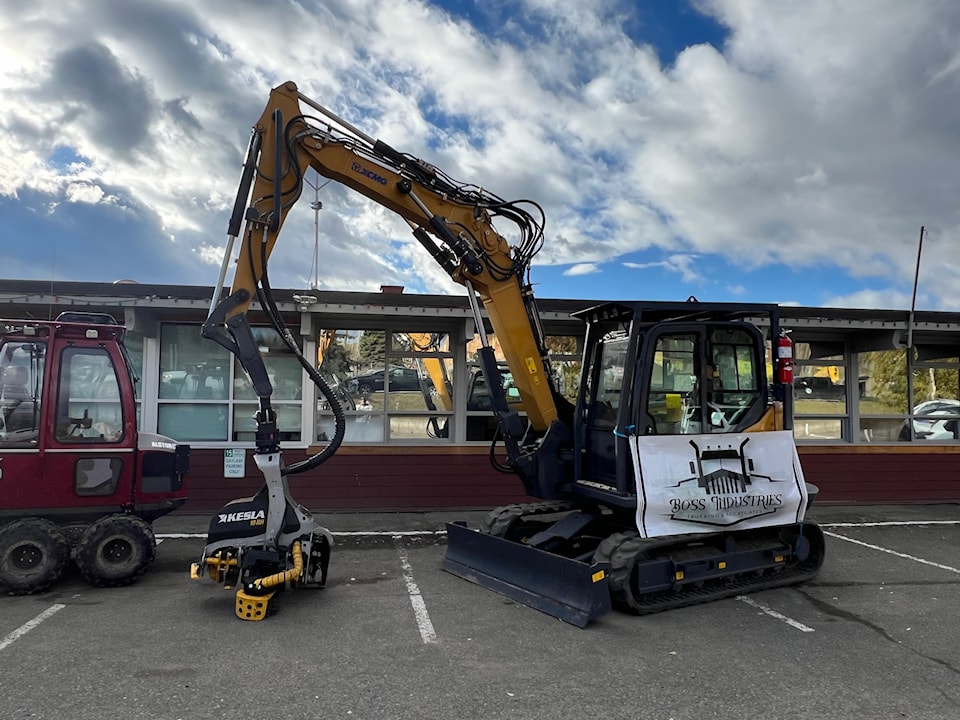Ts’il Kaz Koh (�������� Lake Band) hosted a three-day Community to Community forum focused on Wildfire Risk Reduction from October 23-25.
Albert L. Gerow, natural resources advisor for Ts’il Kaz Koh, reported that over 33 organizations participated, including representatives from the Village of �������� Lake, the Regional District Bulkley Nechako, the Ministry of Forests, various levels of government, local industries, and organizations such as �������� Lake RCMP, �������� Lake Search & Rescue, the College of New Caledonia, and Indigenous groups like the First Nations Forestry Council.
“Approximately seventy people participated in the two and a half day event, providing presentations on the roles and responsibilities of each organization, including elements of current and future works being conducted to reduce the risk of wildfires sweeping through our communities,” Gerow said.
The forum aimed to share wildfire risk reduction plans, fostering collaborative discussions on strategies and best practices. Participants also engaged in a fire smart workshop to educate on applying Fire Smart practices in their communities. Additionally, they identified high-risk community buildings and discussed targeted mitigation measures to protect these structures.
The forum featured static equipment displays showcasing ongoing wildfire risk reduction and commercial thinning efforts by BL Comfor, including an Alstor Forwarder and an XCMG Mini Harvester from Boss Industries.
Presentations covered topics such as pre- and post-mountain pine beetle wildfires, wildfire behaviour, and identifying real risks. Discussions included the effectiveness of building materials and how to implement “Fire Smart” initiatives.
“The atmosphere was very engaging by all participants, ensuring that they covered as much as was feasibly possible, sharing information, identifying barriers, and potential solutions to overcoming those barriers that are in the way of protecting communities from wildfires,” Gerow added.
He highlighted a memorable moment discussing wildfire behaviour during the 2023 season, emphasizing the rapid spread and distance of the fires, which underscored the real threat posed by drought and dead mountain pine beetle timber.
“One of the key accomplishments that were discovered was the sheer vastness of the risk of wildfires due to the amount of dead mountain pine beetle-killed trees, which would require significant financial resources and time to address," Gerow said.
Concerns were raised about Visual Quality Objectives and Old Growth Forests, as 42 per cent of the Lakes Timber Supply Area consists of pine trees, with 75 per cent of mature pines affected by the mountain pine beetle. As these trees, now over 20 years old since infestation, continue to fall, they create ideal conditions for wildfires. Forest companies face challenges accessing these areas to remove dead timber due to current legislation, despite the significant fire risk.
Key outcomes of the forum included establishing collaboration among organizations that may be called upon during wildfire evacuations, reinforcing the need for proactive wildfire risk reduction at both community levels and surrounding buffer zones.
There was also a consensus on the need for more community information sessions on Fire Smart practices, as well as training for wildland firefighters to better prepare for future threats.
Notable presentations included insights from the Chinook Emergency Response Society on emergency plans and an overview by Shifting Mosaics Consulting on the �������� Lake Community Forest’s prescribed burn efforts, which successfully reduced fine fuels to under 1.5 tonnes per hectare, significantly lowering wildfire risk.
Discussions also focused on forming a smaller group to delve deeper into wildfire risk reduction, identifying high-risk areas, researching funding opportunities, and developing initiatives to protect communities.
The forum received positive feedback, with many participants recommending it become an annual event to review achievements and address legislative changes necessary for wildfire risk management.



